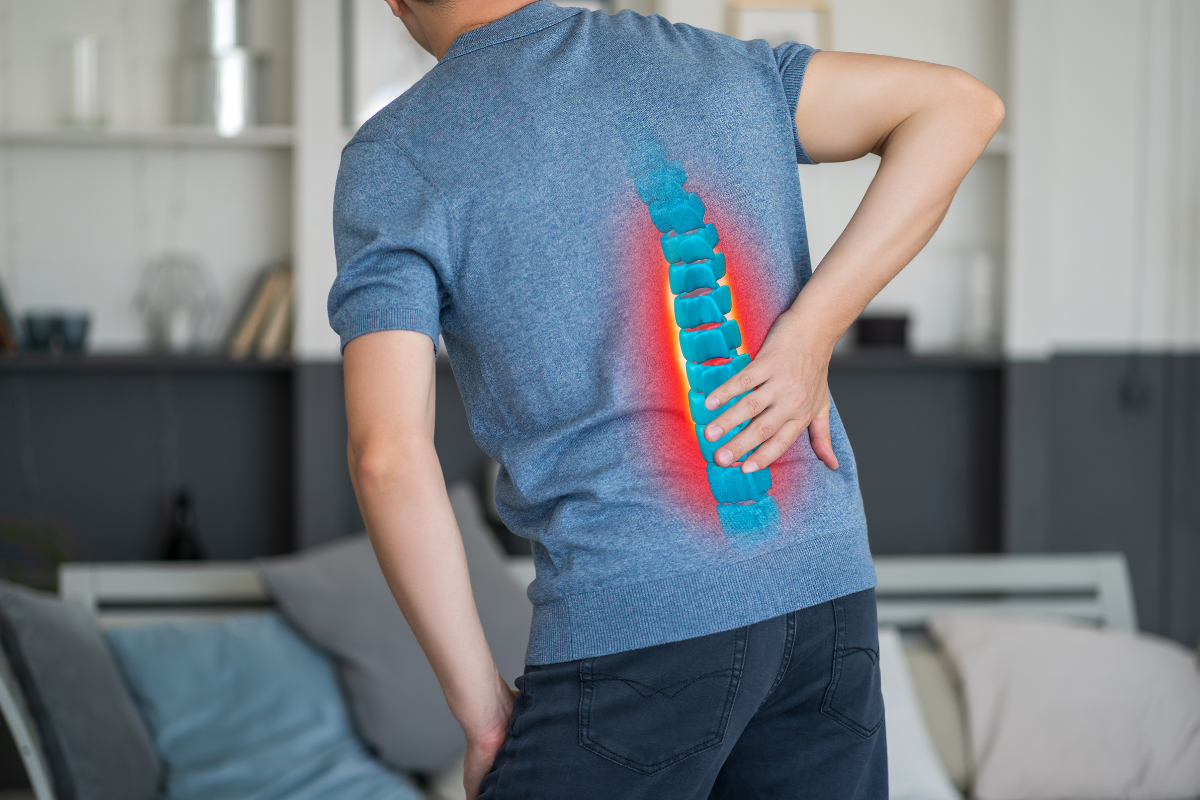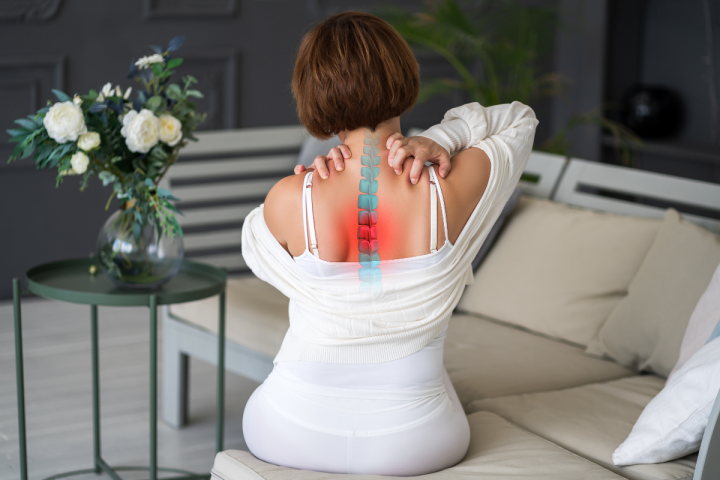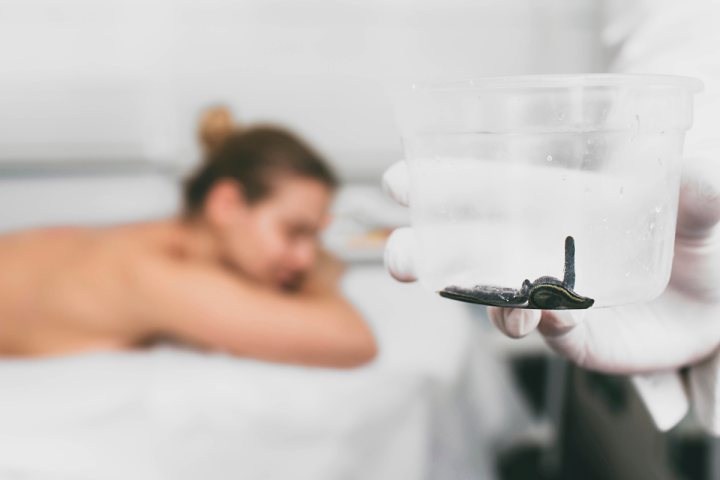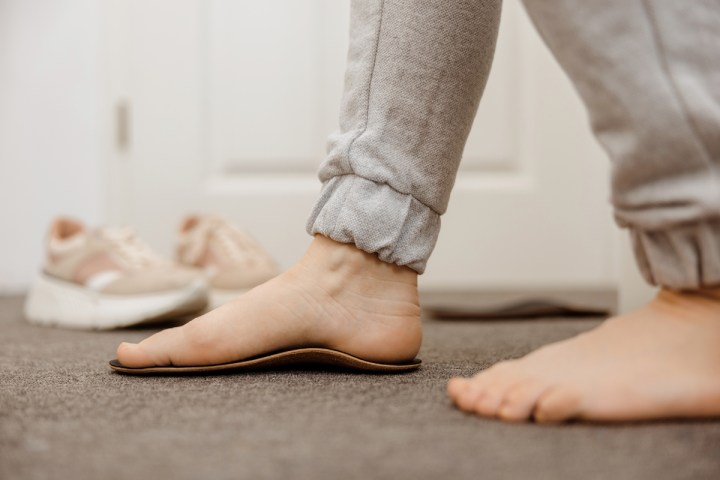Low back pain is a sensation involving the lumbar and sacral regions of the spine. It is a common ailment that more and more people are complaining about. Interestingly, more and more younger people are complaining of low back pain. What are the causes of this pain and what can we do to reduce the discomfort? Read on to find out the symptoms that should motivate you to consult a professional specialist to get rid of your pain!
Back pain - causes
Low back pain, known professionally as low back pain, is a common ailment, affecting up to 80% of the population. It usually resolves spontaneously, but is characterised by a tendency to recur. It is rarely associated with a serious condition that requires immediate medical intervention.
In the majority of cases, we are dealing with so-called non-specific pain, i.e. an ailment not directly linked to a specific condition and whose source is difficult to capture with imaging studies. Only about 10% cases require a more advanced diagnosis. Nevertheless, this type of pain should not be underestimated, as it can accompany serious conditions such as infections, tumours or diseases of the abdominal organs, including aortic aneurysm, intestinal, pancreatic, renal or genital disorders.
The most common cause of pain is mechanical overload or damage to structures surrounding the spine, such as vertebrae, intervertebral discs, ligaments, muscles, tendons or nerves.
Predisposing factors for back pain include age, sedentary lifestyle, poor physical condition, overweight, pregnancy, stimulants, genetic predisposition. In addition, comorbidities such as diabetes or osteoporosis, the type of work performed, and psychological factors such as stress or depression.
Back pain - what types are there?
Different types of back pain can be distinguished depending on the causative factor:
Non-specific pain:
It is the most common type of pain, accounting for up to 90% of all lower back complaints. It arises as a result of overloading of the spinal structures, often without a specific cause. Defects in posture or body structure can also contribute to this type of pain. It manifests itself after exertion or minor trauma, subsiding after rest. It can radiate to the inner thigh up to the knee, and although it usually subsides after a few days, it tends to recur.
Root pain or pain associated with spinal canal stenosis:
It results from compression of the nerves coming out of the nerve cord or the cord itself. This type of pain is the result of degenerative changes, vertebral fractures in the course of osteoporosis or disc herniation (discopathy). It encompasses various syndromes such as root syndrome, cauda equina syndrome or neurogenic stopping chord. Root pain is characterised by a burning or wrenching pain, tingling and numbness in the limbs and muscle weakness. The cauda equina syndrome brings with it extensive sensory and movement disorders of the lower limbs. In addition, there are also problems with urination and bowel movements. Neurogenic stop motion syndrome manifests itself with sacral pain when walking, weakness of muscle strength in the legs and calf pain that subsides when bending forward.
Psychogenic pain:
It is caused by chronic stress or depression, which can lead to sacral back pain.
Pain caused by another disease:
Associated with diseases of the spine or adjacent organs, such as ankylosing spondylitis, cancer or spinal infection. In these cases, the pain does not subside at rest or during the night and is accompanied by symptoms such as deterioration, weight loss and fever.
Other causes
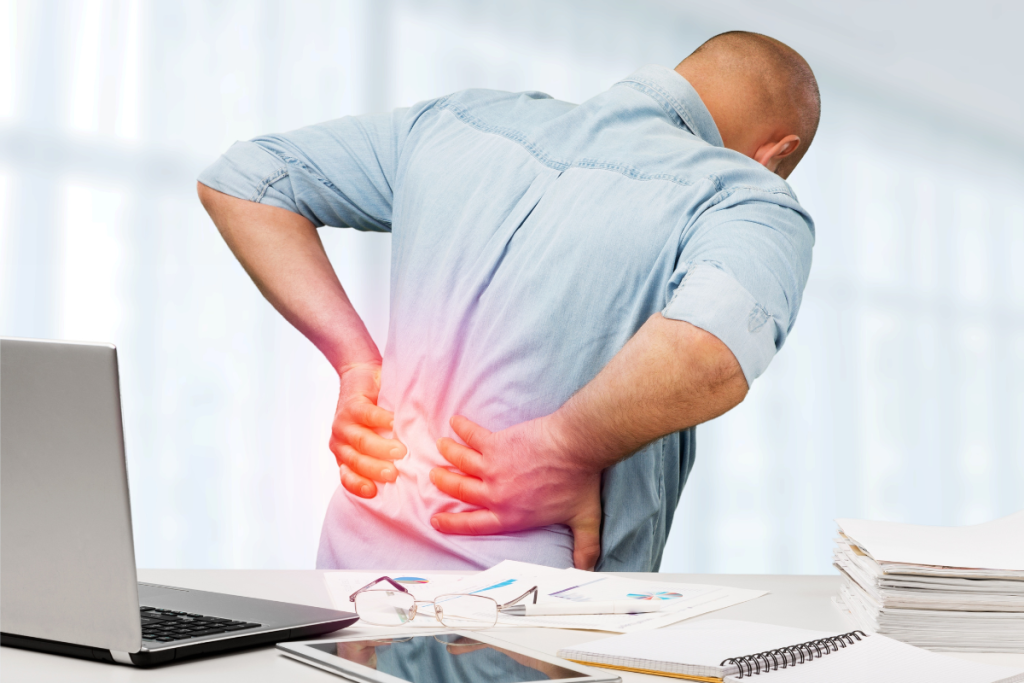
Lower back pain can occur in the context of conditions of neighbouring organs, being accompanied by other complaints related to the primary condition. These are referred to as transfer pains or projected pains. This phenomenon can be encountered in the case of:
- Urinary system:
- Renal or ureteral stones,
- Urinary tract inflammation,
- Bladder inflammation.
- The reproductive system in women:
- Chronic inflammation and tumours of the reproductive organs,
- Endometriosis,
- Painful periods.
- Prostate disease in men.
- Intestinal diseases, such as:
- Chronic constipation,
- Liver diseases,
- Pancreatic diseases.
- Hip and sacroiliac joint disorders.
Back pain and important alarm symptoms!
In most situations, the cause of pain is not a serious medical condition. Nevertheless, it is always advisable to consult a doctor when specific alarm symptoms appear. If you have experienced incontinence or retention of urine or faeces, you are experiencing weakened sensation in the perineal area, and your back pain is due to an accident or injury and is not going away, it is essential to consult a doctor immediately.
Additional symptoms that may indicate serious medical conditions are:
- muscle weakness or numbness in one or both legs,
- increased pain when coughing or sneezing,
- occurrence of pain when walking or in an upright position,
- fever or weight loss for no apparent reason,
- pain during steroid therapy,
- concomitant cancer or other serious comorbidities,
- recent urological or gynaecological surgery,
- intense pain that does not subside even when resting.

Ways to deal with back pain
The therapeutic process focuses on relieving bothersome discomforts associated with the lumbosacral area. To this end, we use physical therapy procedures. The use of physical therapy produces effective results. Kinesitherapy, in the context of pain in the lumbar region, includes methods of dry needling, exercises, diverse massage techniques, fascial therapy, pinotherapy, kinesiotaping, as well as manual therapy.

